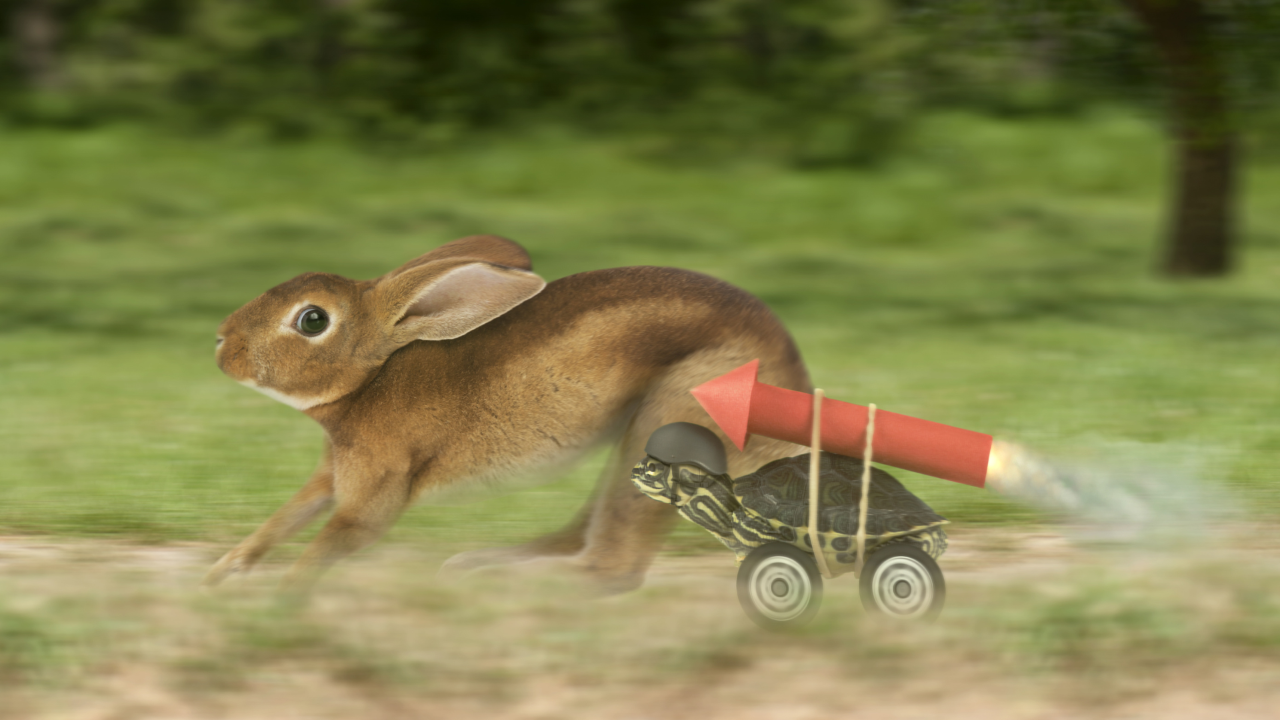Are You a Hare Or a Tortoise?

This is a case study with two different investors with £100K to invest:
Amy decided to use her £100K to buy a property cash, refurb it and refinance it.
George was looking to invest his £100K in four buy-to-lets (BTLs) in good areas and in good condition.
Amy was really lucky, she got a property below market value, the refurbishment went well, there were minor additional costs as the team uncovered problems when they lifted up the floor but, overall, upon refinance Amy had a deal that generated a healthy return.
She left only £23K in the property meaning she got all of her money back apart from £23K.
George however went for a different strategy, he purchased four turnkey BTLs in areas that provided good capital appreciation and rental demand. George's properties were located in two of the best cities for growth predicted by Savills. George only spent a total of £98K as he's purchasing on a mortgage and not spending anything on the refurbishment. With a friendly estate agent he viewed many to ensure he got the right one.
Over the year all four properties have been re-valued and George will be receiving an extra 30k over the four properties he purchased. in one year!
Let’s map that against Amy:
- Amy's money is tied up for almost full year (conveyancing 4 months, refurb 4 months, refinance 2 months)
- Amy’s not getting any rent that year whereas the turnkeys can be let out instantly.
- Amy is only gaining capital appreciation on one property, while George is getting it on all four.
- Amy's deal is slightly better off by a few thousand, but she is taking on the risk of the refurb where things often go wrong. Plus she is taking a risk on the refinance, as it is not guaranteed that she’ll get her desired amount, (in this case she was lucky).
- The rental increase George is getting from all four properties (£13K per year) more than covers the profit Amy has received. And George is taking on no risk, as he will get a survey and buy at the right price.
- Then add on the capital appreciation profit that accumulates to £43K.
On the face of it, this makes the BRR model look unattractive, but this situation is much like the 'tortoise and hare' allegory - with Amy and George filling those respective roles.
George can build a maximum portfolio of 4, then he is done because all of his money is invested, and he has no cash to buy any more properties.
Amy has infinite potential to build the size of her portfolio by recycling her cash out of each property she buys and putting her £100k back in her bank account to buy the next one - with some caveats - trying to pull all of her money out on residential cosmetic refurbs is pretty much a lost cause, too much competition to buy them cheap enough for BRR to work effectively.
To make it work and not leave anything like £23k left in a deal (which is a waste of her time) she needs to switch attention to properties with bigger problems than just needing a refurb - ones that:
- Most people don’t want to take on
- Stay on the market longer
- Have more motivated owners
- Can only be bought with cash.
This takes a lot more discipline in selecting the right property.
Capital appreciation is slow, so one or four is not going to pull up trees either way.
Hare George makes the faster start and looks a clear winner after a year or two - but he has to wait until generic market capital growth increases sufficiently to the point where he can refinance to pull out enough cash to buy property 5. This probably defers the purchase of property number 5 by up to 5 years.
Tortoise Amy makes the slower start, but she learns quick and gets smarter with each problematic wreck she buys. She progressively buys better, turns her cash around faster. She also learns to present her properties better to gain higher refinance values, minimising the cash left in still further.
She reaches another level, by learning to leverage her buys using the cash tied up in one property to buy a second so she can double up and finance two properties at a time - thus accelerating the growth of her portfolio faster.
It is in years 5-10 where she really begins to outpace George, whose fast start has long since evaporated and now he just treads water, passively waiting for market increases in value to free up enough equity to buy another single property.
By year 10 George has a portfolio still geared to the max, because he has to keep pulling equity to fund the next purchase. By contrast, Amy has never needed to refinance because her buying strategies are more advanced, so not only does her portfolio size dwarfs George's, the gearing is lower too.
This is how BRR really works – it’s not just about making a quick profit, it’s a long-term strategy.
You can learn more by:
- Attending an upcoming webinar - register here
- Booking into a LIVE! 4-day workshop - book your ticket here
- Get instant access to the full programme with the online training - click here for more information




